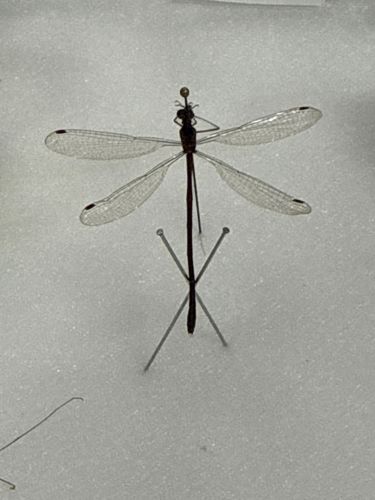Antlion
Scientific Name: Myrmeleontidae
Order & Family: Neuroptera, Myrmeleontidae
Size: Adults can range from 1 to 5 cm (0.4 to 2 inches) in body length, with wingspans up to 10 cm (4 inches).

Natural Habitat
Adult antlions are often found in sandy areas, woodlands, and fields, typically near their larval habitats. Larvae (doodlebugs) reside in dry, sandy soil.
Diet & Feeding
Adult antlions are predatory, feeding on small flying insects such as aphids, mites, and sometimes smaller moths. Larvae are voracious predators, primarily eating ants and other small insects that fall into their sand pits.
Behavior Patterns
Adult antlions are nocturnal or crepuscular, often attracted to lights. They are weak fliers compared to dragonflies. The larvae are famous for digging conical pits in sandy soil to trap prey. They lie in wait at the bottom of these pits, ambushing insects that slide down the loose sand.
Risks & Benefits
Antlions pose no known risks to humans. As predators of other insects, they provide a benefit by helping to control populations of various small invertebrates, including some agricultural pests. They are also considered bioindicators of ecosystem health due to their specific habitat requirements.
Identified on: 9/19/2025